Censory Overload: An in-depth look at Australian video game classification
GameSpot AU's in-depth look at Australian video game classification.
"Censorship reflects a society's lack of confidence in itself. It is a hallmark of an authoritarian regime." -- Potter Stewart (American Judge and associate justice of the US Supreme Court (1958-81))
How much does the right to choose what content you view mean to you, the consumer? Over the next three weeks, GameSpot AU will explore the thorny issue of videogame classification and censorship in Australia. We'll attempt to clarify some of the common misconceptions about game ratings, demystify the process behind classification, as well as examine in detail all of the reasons why Australia has no R18+ rating for games and what you--the Aussie gamer--can do to try and spur some change.
Part One of our feature will look at how the current system works, and the history of games classification in Australia (including self-regulation). Part Two--which will hit GameSpot AU late next week--will take a look at the consistency of cross-media classification, provide a comparison of worldwide standards to see how Australia's censorship laws stack up, and explain why games here lack an R18+ rating in the first place. In Part Three, we'll take a look behind the scenes, evaluating the impact of banned goods on retailers, developers, and you--the players. We'll also gaze into the GameSpot AU crystal ball, and attempt to pick some of the controversial titles of 2008, and predict how they'll fare when they run the game classification gauntlet.
"I find censorship today in Australia a mass of confusing and conflicting laws..." -- Bill Hayden, Former Governor-General of Australia
Dark Sector, Manhunt, Marc Ecko's Getting Up: Contents Under Pressure, Reservoir Dogs, BMX XXX, Blitz: The League, and Postal 2. What do all these games have in common?
All of the above games are banned for sale in Australia, casualties of our country's strict games classification system. While other forms of media (such as films and DVDs) have ratings that allow for the distribution of content deemed suitable for adults only, games do not. The highest classification available for a video game down under is MA15+, a rating which states that anyone under the age of 15 must be accompanied by an adult while playing. Films and DVDs, on the other hand, have an R18+ rating for content deemed suitable only for people aged 18 years and over. With MA15+ the highest rating available for games, any content deemed suitable only for adults 18 years old and over is refused classification by our country's peak ratings body, rendering that content illegal for sale in Australia.
Industry groups such as Electronic Frontier Australia (EFA) and the Interactive Entertainment Association of Australia (IEAA) believe a lack of an R18+ rating for games does a disservice to Australian consumers and adults by creating division between the film and video game mediums, which further muddies the waters when determining suitability of content. They also contend that that the growing disparity between ratings for film and computer games shows an ignorance of the changing nature of media consumption in Australia. The other effect of these restricted classification guidelines is that producers of mature-themed content must self-censor their work to fit the highest available MA15+ rating or risk being refused classification.
The Office of Film and Literature Classification (OFLC) is the government body responsible for classification, and as such has been the target for many an Australian gamer's ire. While the organisation factors heavily in the game classification process, all of the OFLC's decisions are bound within the confines of a legislative framework determined by state and national law. To better understand how this works, let's take a look at how video games are classified down under, and how legislation governs the type of content which can be made available to consumers.
"I'm all in favour of free expression, provided it's kept rigidly under control." (Alan Bennett, Forty Years On, 1969)
Before any video game is made legally available for sale in Australia, the OFLC must assign a classification rating to that specific title. Depending on the nature of its content, a game in Australia can either receive a rating of G, PG, M, or MA15+. To decide what rating a game receives, the OFLC looks at the game's stated content and compares it to content guidelines as set out in a piece of legislation called the National Classification Scheme, which is based on the Commonwealth Classification Act 1995 (the National Classification Code is actually part of the Act).
The Classification Code itself opens with the noble sentiment that "adults should be able to read, hear and see what they want." Below this are listed goals of protecting minors and all other consumers of media from exposure to offensive or disturbing material. Section (d) of the code specifically deals with "community concerns about depictions that condone or incite violence, particularly sexual violence; and the portrayal of persons in a demeaning manner."
There are six classifiable elements when analysing media such as a video game to determine what rating it should carry: violence, sex, language, drug use, themes, and nudity. Each is uniquely identified and evaluated to assess their impact and contextual use in the title's broader picture. Intensity and frequency also play a role and are used to measure an element against the acceptability of the MA15+ rating. Prolonging, repeating, drawing attention to, or encouraging interactivity in a game's scene may be perceived as increasing its impact to the player. This includes, but is not limited to, level of detail, close-ups, slow motion, lighting effects, perspective, and realism.
While the federal government makes decisions on the direction and specifications of these guidelines, it is the state and territory governments' role to ensure they are enforced. The National Classification Scheme took effect on January 1, 1996, as a result of recommendations made by the Law Reform Commission in 1991 with the goal of creating a nationwide approach to censorship.
The process of game classification is carried out by the OFLC using the National Classification Scheme and Classification Act as a framework on which to base its decisions. The Classification Review Board is a separate body responsible for the evaluation of decisions made by the OFLC including mediation of appeals by content submitters. Under section 5B of the Classification Act 1995, business, accounting, professional, scientific, and educational electronic titles are exempt from classification--everything else (which is essentially just games) must go through classification.
In Australia, a process of self-regulation is in place, which means game publishers can effectively assign a classification rating to their own titles, with the OFLC rubber-stamping their decisions. There is a catch, however, as self-assessment can be carried out only on games which will receive G or PG ratings. Any game which could conceivably receive an M or MA15+ has to jump through more submission hoops.
Submission is broken into two separate strands: submissions by Authorised Assessors and nonauthorised Assessors. Authorised Assessors are usually game distributor employees who complete a one-day training course outlining the requirements of games submitted to be classified. The Authorised Assessors pass their judgment on a title's impact to the director of the OFLC board where it's taken into account during rating. Games submitted by nonauthorised assessors--those who have not completed the training--carry a price premium on their submission. A text-only summary of a game for an unrestricted M game attracts a A$2,040 fee. Adding a video of typical gameplay footage alongside your text will see the fee almost halved to A$1,150. In comparison, Authorised Assessors are looking at either an A$810 or A$630 fee for their rating depending on whether they supply text or a text-and-video synopsis of their MA15+ game. Providing more material to help the board make a decision lowers the payable cost of submission. Lower-impact unrestricted M game submissions are cheaper still, and cost A$430.
Demonstration of a game can be requested at any time by the OFLC at the submitter's expense. Live demonstrations cost A$1,070, and although an OFLC representative could not confirm an exact figure on the number of demonstration requests made for games, they did tell us they were "infrequent" and reserved for game submissions at the top end of the MA15+ rating scale.
Leave us a comment and let us know your thoughts on Australian video game classification.
"Censorship is the very wall that holds creativity back from complete freedom; because without exposure to the good and the bad, the acceptable and inappropriate and the offensive and polite, how will the mind thrive for more than what is given?" -- Anonymous
With the OFLC's hands bound by legislation that decides what type of games can be made available in Australia, it's no wonder that our track record of refusing classification to videogames is known the world over.
Based on OFLC statistics, between 2006 and 2007 more than 6200 items of media were rated in Australia. Of this figure, only 890 represented computer games, with the remainder made up of print publications (books and magazines), publicly exhibited films, and VHS and DVD sales and rentals. The figure also includes referrals from both the Australian Communications and Media Authority (ACMA) and Australian law enforcement agencies.
Of those 890 games, 765 were rated either G or PG. Of the 125 MA15+ titles submitted, only four games were banned for not meeting the classification guidelines. Going back even further, a look back at the last decade shows that 26 titles were banned outright in Australia for failing to meet ratings guidelines. However, while both high- and low-profile game franchises have been denied sale in Australia, appeals and editing have allowed numerous others that were initially refused classification to fit into the maximum MA15+ rating as outlined by the National Classification Code and to go on to be sold legally.
Duke Nukem 3D and Soldier of Fortune: Payback are two such examples that, during the process of their classification, were found to be outside of the guidelines and required modification before they would be allowed to be sold. Duke Nukem's 1996 classification included the voluntary removal of specific elements of the game, namely the depiction of women as exotic dancers and as prisoners inside cocoons. While those images were disabled for the Australian retail release and passed, a patch available on the Internet allowed full functionality to be restored, enabling features that were not taken into consideration (thus unclassified) during the game's submission for its rating. (While this may appear fairly tame by today's standards, a similar issue would again come to the fore with the "Hot Coffee" Grand Theft Auto San Andreas scandal some eight years later.) Duke went on to be re-rated and allowed to be sold by Australian retailers at the maximum MA15+ classification rating.
Soldier of Fortune: Payback travelled a slightly different path on its way to classification approval in Australia. In October 2007, the game was refused classification rating by the OFLC due to "close-range shooting with substantial blood spray, blood splatters on the ground and walls, and the ability to target various limbs of the opponent which can result in dismemberment." All these features are typical of the two previous SoF games which passed as MA15+ rated titles for their high level of animated violence. Soldier of Fortune: Payback required significant changes to be made, and after doing so Activision's ultra-violent shooter was able to successfully pass through the censors a second time a month later. The changes included reducing the number of blood effects, removing the ability to dismember enemies, and toning down the ragdoll physics present in the game. Again all three features are staples of the series, and all featured prominently in the two previous games which passed through unscathed on their first attempt.
Of course, there can't be any serious classification discussion without mentioning Rockstar Games. The company is certainly no stranger to controversy, especially here in Australia, where it has had its fair share of run-ins with the OFLC over its hugely successful Grand Theft Auto series. Manhunt on the Xbox and PlayStation 2 platforms set an Australian censorship precedent when the game was banned almost a year after going on sale rated MA15+. Though the game had been available between October 2003 and September 2004, the federal Attorney General intervened on behalf of the Western Australian Minister for Justice to get the game taken off shelves. The retrofitting of an RC (refused classification) rating made the product illegal to sell, rent, own, advertise, or publicly display in Australia, and it remains banned from both sale and foreign import under threat of heavy penalties (including fines).
It would appear depictions of strong violence remain one of the most contentious issues facing games submitted for classification in Australia. Game developer Digital Extremes is the latest to feel the full wrath of the OFLC in February this year when its title Dark Sector was banned ahead of a March 2008 retail launch. In its official statement relating to the ruling, the OFLC cited "decapitation and dismemberment of limbs accompanied by large blood spurts," as a major cause for the ban. The board also contests that "when Hayden cuts off his opponent's limbs with the glaive, large amounts of blood spray forth from the stump and the injured person screams with agony which increases the impact." Only a few weeks later Ninja Gaiden II successfully sailed the treacherous Australian rating waters and receive an MA15+ rating, despite decapitation and disembowelment playing a pivotal role in the title's gameplay mechanics.
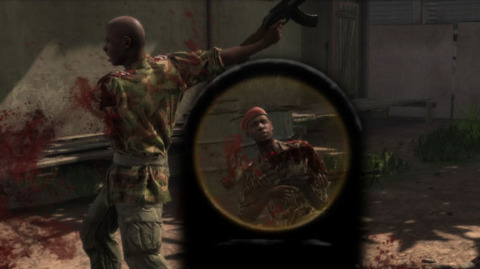
A look back over the last decade's banned games list reveals that with the exception of Nintendo (no real surprises there) and Microsoft, all the major players have had at least one title butt heads with the Australian censor body. EA, Activision, Red Ant, AFA Interactive, Atari, Acclaim, Eidos, Sony, Take 2, THQ, Vivendi, and Sega have all joined the illustrious ranks of having their games marked part of the "not for sale in this country" club.
In order for any change to be made to this process (the establishment of an R18+ rating for games, for example), all state and territory Attorneys-Generals must agree. Only then is the proposal submitted to the Federal Minister for Home Affairs Bob Debus for consideration. While the issue of an adult rating has been broached at Standing Committee of Attorney-General (SCAG) meetings previously, little is likely to change in the short-term. At the most recent SCAG meeting held on March 28, 2008, the various Attorneys-General decided on taking the issue for public consultation.
In Part Two of this feature, we'll dive headfirst into the reasons why Australia doesn't have an R18+ rating for games, as well as compare ourselves to the rest of the world to see exactly how we fare comparatively when it comes to culling adult content. Stay tuned to GameSpot AU for more.
Leave us a comment and let us know your thoughts on Australian video game classification.
In the first part of Censory Overload, we dissected and discussed the current games classification system in Australia, the hoops developers and publishers need to jump through, and the titles unlucky enough to have gotten the big red "banned" stamp in the past. So now that you get how the system works down under--as well as what happens to titles that don't meet the classification guidelines--it's time to ask: Why is it that a nation such as Australia doesn't have a mature rating for games? And how does our games classification system compare to the rest of world? Read on to find out more in Part Two of Censory Overload.
Ask most people who oppose the introduction of an R18+ rating for games in Australia why they have that position and they'll likely say it's because children must be protected from inappropriate content. This point of view, of course, assumes that most gamers are children, a stereotype which has been disproven by many studies. One of the most recent Australian studies, "Interactive Australia 2007", a survey conducted by Bond University in Queensland, found through a random sampling of more than 1600 participants from households across Australia that the average of an Aussie gamer is now 28 years old. Eight percent of the total number of gamers surveyed were 60 years or older. From current data it is predicted that by 2014 the average gamer age will be 42 years old. The survey also found that over a third of Australian gamers are parents.
Ron Curry, CEO of the Interactive Entertainment Association of Australia (IEAA)--an organisation which represents all major Australian-based game publishers--says government policy is to blame for the lack of a local R18+ rating. "Essentially, the bottleneck at the moment is the acceptance unanimously by the state and territory attorneys-general... from what I'm hearing the only objection so far I've heard is from South Australia," Curry said. "I think in the past (and hopefully this is slowly changing) Parliament [was] controlled by a generation who [didn't] understand the whole medium we're in. They don't understand video gaming. We have had attorneys-general in the past who have said 'games are for kids', so part of our responsibility as an association is to keep delivering the message that it's interactive entertainment, not games, and it's not just for kids. Our audience is way older than that, and way more mature."
As covered in Part One of Censory Overload, all of Australia's various federal, state, and territory attorneys-general must all agree before an R18+ rating for games is introduced down under. A long time opponent of such an introduction is South Australian Attorney-General and Minister for Justice and Multicultural Affairs, Michael Atkinson. While the minister was unavailable for comment for this feature, his most recent parliamentary statement on the issue offers a less than optimistic view for gamers hoping he may yet change his mind on the issue. "I do not want children to be able to get their hands on R18+ games easily. I understand that the lack of an R18+ classification denies some adults the chance to play some games, however, the need to keep potentially harmful material away from children is far more important," Atkinson said.
"There are not adequate safeguards that can properly protect our children from those disturbing scenes and I know how computer-literate they are. Like other parents in Australia, I want to try to protect children from being able to access computer-generated pornography and violence."
Rather than simply dismiss the "protect our children" mantra as a little more than a scapegoat defense, the IEAA's Ron Curry believes the South Australian Minister's statement should serve as an opportunity for all parties to reflect on the issues at hand. "Everybody along that cycle has responsibility. Publishers have a responsibility to make sure they're displaying the R18+ classification that we're classifying correctly, and the government has the responsibility to ensure legislation is in place that can enforce the sale of R18+ to the right group of people. Enforcement has to be in place; retailers have to be responsible about who they sell it to, and ultimately parents need to understand the content their children are watching or playing as they should with TV, Internet, DVD, and publications," he said.
While one of the main effects of the possible introduction of an R18+ rating in Australia will be an open recognition that gamers aren't just young children anymore, Curry also says it will further empower those wanting to keep young people away from inappropriate content. Curry says that despite the high proportion of adult gamers--so many of which play alongside their children--the vast majority admitted to being confused by the difference between M and MA15+ rated titles. "The average age is 28 and the industry needs to start catering for the more mature consumer," Curry said. "We need to treat them like adults and give them the broad choice of entertainment they're looking for. That's not necessarily more sex or violence: what it is, is more adult-themed gaming. We think it [the introduction of R18+] gives parents a better clue, it gives them the full toolkit so they know exactly what media their children have got and what that classification means."
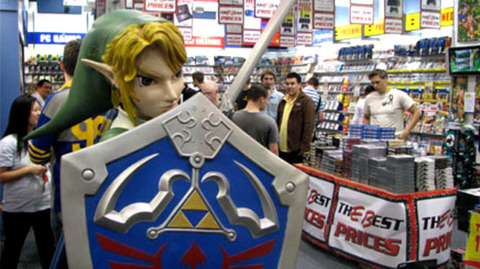
Introducing an R18+ rating will mean fewer banned games, which in turn will lead to less piracy, Curry says. "I think you'll find, and certainly [this is evident] in the research being done in the UK, when a game is refused classification or banned there is a spike in piracy for that game. Our concern is that if a game is refused classification in Australia kids are going to get it some other way, they're going to download it off the internet and then they'll burn it and share it with friends. We'd rather a game that's R18+ be on shelves with a sticker so parents understand what the content is," Curry said.
While it may seem like the Aussie national classification in its current incarnation for video games is nothing but doom and gloom, the results of the latest Standing Committee of Attorneys-General meeting (held on March 28, 2008) offers a glimmer of hope for Australian gamers. The meeting was the first of its kind to discuss the viability of an R18+ rating for games since 2005, and prompted Victorian Deputy Premier and Attorney General Rob Hulls later on to say that in their current form, Australian classification laws were "out of step" with the remainder of the developed world". "It seems inconsistent that in Australia, adults are allowed to view 'adult only' films which have been classified R18+ by the Classification Board, but not computer games with an equivalent high-level content," he said in a statement. "With the increasing convergence between films and games, the different approach to classification principles is difficult to sustain."
While the Federal Government has yet to make up its mind or take a formal stance on whether it is supportive of the introduction of a restricted 18+ rating for games, it did announce that it will soon call for public opinion on the issue. No plans have yet been announced outlining how exactly community attitudes will be gauged. While a review of the current system and the introduction of the often publicly requested R18+ rating may still be some way off, this does represent a step in the right direction towards a more complete and informative rating guide for gamers and parents.
"Censorship in any form is the enemy of creativity, since it cuts off the life blood of creativity: ideas."--Allan Jenkins
Comparing Australia with the world
Australia is known globally for its tough stance on video game censorship, but how do we really compare to other nations when it comes to limiting game freedom? Do we Australians deserve the reputation we currently have for being video game prudes?
A quick comparison between our system and those found in other developed nations such as North America, Japan, the United Kingdom, and the rest of Europe confirms what many have long suspected—ours is the only one that doesn't have a rating for adult-themed games. All of the countries mentioned above have their own system, each with its own subtle nuances, age differences, and guidelines on the suitability of games. But each also acknowledges the need to classify adult content for adult gamers. Let's take a look at how our neighbours to the north works when it comes to rubber stamping new releases.
Japan's Computer Entertainment Rating Organization (CERO) was established in 2002 as a branch of the nation's Computer Entertainment Supplier's Association (CESA). The early '90s also saw the formation of the Ethics Organization of Computer Software (EOCS), a group started by the country's adult entertainment industry to help regulate primarily adult-themed games. CERO and EOCS happily coexist as their content does not overlap. Like Europe's cross-region classification system PEGI, submission to the EOCS board for rating is voluntary, but its uptake by publishers is high for fear of Japanese retailers refusing to sell unrated software. EOCS is responsible for the censorship of content depicting sex acts and the display of genitals--acts frowned upon in Japanese media. Content is usually digitally obscured accordingly. Although CERO and EOCS do similar jobs in different categories, they do not use the same rating markings on packaging to indicate the suitability of content to consumers. EOCS has a streamlined three tier rating system which includes a "general" category suitable to all ages, "restricted" for viewers 15 or over only, and "18+", the highest of the three and restricted to those olden than 18 years. CERO ratings, on the other hand, have a five-tiered categorisation system. The EOCS ages are represented in the system, but CERO also fills the gaps on either side with the option of two additional categories. The different ratings are represented by letters, with A giving purchasers an indication the product is suitable for all ages. B for 12 or older players, C is ages 15 plus, D is 17 or higher, and the maximum Z rating is restricted to those over 18 years. Z ratings are also the only ones to be regulated by the government.
Despite Japan's entertainment industry being classified by two voluntary, non-government-run rating systems, the country has had only several minor brushes with game censorship. In 2005, the Kanagawa prefecture imposed a self ban on Grand Theft Auto III describing it as a "harmful publication". Other prefectures considered a similar move, but rather than require government intervention, the Japanese games industry, through CESA, re-evaluated the then current policy, and as a result two more rating categories were introduced.
The United States of America is the world's largest gaming market, often taking in excess of US$1 billion worth of retail game sales per calendar month. Like Japan, game classification is self-assessed, with ratings approved by an industry group. The Entertainment Software Rating Board (ESRB) is an offshoot of the Entertainment Software Association (ESA) and began operating in 1994 with the sole purpose of classifying games. Because of its recognition by consumers, very few publishers do not submit under the voluntary process (even though it's not a legal requirement to do so). US software retailers continue to shy away from carrying unrated titles on their shelves, forcing a level playing field for publishers and helping give consumers fair warning of content they may purchase.
The ESRB offers a multi-tiered rating system, with scope for titles from EC (early childhood), E for everyone aged 3 plus, E10 for viewers 10 or over, T (teen) 13 and up, and M (mature) for those over 17. The ESRB also has provision for an AO adults only rating, which is (not surprisingly) reserved for adult titles and includes graphic violence or depictions of sex. While the AO rating can be given to a game, Microsoft, Sony, and Nintendo do not allow games with the rating to be published on their consoles. Many US retailers also refuse to stock the adult titles. This maximum rating has been issued sparingly in the ESRB's rating history, with the most recent recipient being Rockstar Games' Manhunt 2 in 2007, which was later re-evaluated and rated M.
Europe too has gone down the self-regulation route for games, choosing to put its faith in the Pan European Game Information (PEGI) system to get suitable content into the hands of gamers and parents. PEGI, which was formed under the Interactive Software Federation of Europe (ISFE), was introduced in 2003 with the goal of offering a single classification system for all regions. It is an industry-driven body, made up of publishers and developers. Currently the system operates in 30 different European countries, including Bulgaria, Cyprus, Italy, Spain, and the UK. Despite this, it is only a legally enforceable system in Austria, Finland, and Poland. To ensure members don't get away with any funny business by passing inappropriate games outside of the intended age brackets, the Netherlands Institute for the Classification of Audio-visual Media (NICAM), acting on behalf of the ISFE, cross checks publisher scores to ensure they meet the rating guidelines.
PEGI also includes an online rating component, the PEGI Online Safety Code (POSC). In order to qualify for the appropriate box descriptors, submitters must demonstrate their dedication to providing players with law-abiding, appropriate online content, with an emphasis on safe user interaction between players.
Like the ESRB and OFLC, PEGI's rating system requires the viewing of a title's contentious content, and only after adhering to decency and suitability guidelines is a game approved for sale. Unlike the OFLC, however, PEGI has provision for mature content. The categories are: 3+, 7+, 12+, 16+, and 18+. These are the standard age brackets, however, Finland has shaved a year off two of their ratings to offer 11+ and 15+ games, while Portugal tacks one on to make it 4+ at the lowest level, and removes a year to become 6+. Alongside each of these prominently placed age logos is one or more stylised icon to indicate the type of mature content present. These include: language, violence, sex, drugs, fear, gambling, and discrimination, the latter of which is important given the far geographical reaches of the PEGI system and the potential for differences of social values and cultural beliefs across countries.
As well as PEGI, both the United Kingdom and Germany have chosen to seek alternative legal systems for ratings. The UK has the British Board of Film Classification (BBFC) while Germany has the more fun to pronounce Unterhaltungssoftware Selbstkontrolle (USK).
Like Australia's OFLC system, the BBFC's classification process includes both games and films. Unlike Australia's system, however, both can be rated up to a maximum restricted R18+ category, a far cry from our comparatively antiquated highest MA15+ evaluation option. Games must fall within one of the outlined: Universal, PG, 12, 15, or 18 age brackets to be legally sold.
Only two games have had the dubious honour of being banned in the UK. Carmageddon raised the censor board's eyebrows with its over-the-top pedestrian violence in 1997, but was eventually passed after edits were made to the game. Last year the BBFC became embroiled in a well-publicised stoush with Rockstar Games when the PlayStation 2 and Wii versions of Manhunt 2 were refused classification. The BBFC's director David Cooke went as far as describing the title as having "unremitting bleakness and callousness of tone in an overall game context which constantly encourages visceral killing with exceptionally little alleviation or distancing." March this year saw the overturning of the ruling by appeal, allowing the game to go on sale at the country's maximum 18 rating. March 2008 was an interesting month for games in the UK, with the release of the government-commissioned Byron Report into the effects of videogames and the internet on children. It also saw the BBFC classify the latest adventure in the highly anticipated Grand Theft Auto series fit for sale, giving GTA IV the thumbs up at the 18 rating.
Despite its rumoured tough rating system, Germany is yet another nation with facility in its classification system to restrict games to adult players aged 18 or over. Violence and its context play huge roles in how games are censored in the country, with abstract and comical violence funnelling a game into a 6 or over rating. Games rated suitable for children 12 and up may contain only low levels of violence, and where possible, preferably in fictional settings such as sci-fi titles or historical games. Violence involving gunfights are candidates for a 16+ rating, while games which contain brutal, bloody violence, venerate war or the abuse of human rights are rated as suitable only for those over 18 years. Even at the maximum legal rating, 18+ games in Germany are subject to editing to meet the guideline criteria. In order to meet the requirements for sale, Grand Theft Auto III required its gore levels to be slightly tweaked, headshots removed, and civilians to no longer drop money when killed in order to satisfy the USK.
Interesting, while games in Germany can still be refused classification, these titles are not banned for sale, but are instead referred to the Bundesprüfstelle für jugendgefährdende Medien (BPjM), the Federal Verification Office for Youth-Endangering Media where they're added to the "Index" (Indizierrung). The BPjM falls under the umbrella of the Federal Ministry for Family Affairs, Senior Citizens, Women and Youth. Once on the list, games may be sold by request to adults 18 and over through retail outlets provided they are not advertised or displayed to minors once sold. Publishing of the list of indexed titles by parties other than the government is an offence, with a quarterly government-sanctioned list available for purchase. Despite the under-the-counter adult game system in place, titles deemed outside of the guide can still be banned. Games promoting Nazism or featuring representations of the Swastika outside of a historical context are blackballed, likewise Rockstar Games' Manhunt was too violent for the nation's censors and was banned outright.
As a result of Germany's classification system many game distributors opt to skip retail launches for titles refused classification in Germany due to the risk of commercial failure. Microsoft is one such company, and chose not to release Gears of War after the USK refused it the maximum 18+ rating.
While our lack of a restricted 18+ classifiable category for games means we see one or two titles banned each year which do not fit the maximum MA15+ guidelines, perhaps the bigger concern is that under the current censorship legislation, content being rated as 18+ or higher in other first world nations is being deemed suitable for Australian children 15 and over. In part three of Censory Overload we'll explore this issue further, as well as take a look at the impact current game classification has on developers, distributors retailers, and you the gamer.
In this the third and final part of our feature we'll take a step back from the government red tape and look instead at those impacted most by our game classification system--the people making games, the companies who distribute them, retailers, and the last line of vocal defence, you the consumer.
While Australians who believe they have been wronged are quite vocal about the changes they believe are required to better classify video game content in this country, those that feel the financial strain of any game ban--retailers, developers, and distributors--remain surprisingly silent.
Many companies approached by GameSpot AU for comment refused to do so (although it's not uncommon for companies to choose not to offer an opinion on the record to media, particularly where sensitive financial data or the jeopardy of established business relationships are concerned). The recurring theme appeared not to be that they agreed with the existing regime and how it works, but rather that no company wants to be responsible for dishing the dirt normally reserved for discussion behind closed doors, and potentially issuing the challenge of further crackdown on our already over-policed censorship system.
Many interviewees, particularly those working in game companies, offered to speak to us on the condition of anonymity, and each brought with them a unique insight into the process of game classification down under. Many identified the emerging trend of consumers seeking "uncut" versions of games as a legitimate cause of concern, with international import potentially leading to a significant dent in the number of dollars being spent on our shores.
When asked their thoughts on the current classification system, most publisher contacts indicated their support and understanding for current law, but also acknowledged the need for an R18+ restricted game category to help provide a more holistic approach to entertainment censorship and education.
One company who was willing to go on the record to discuss the burning issues was AFA Interactive. Adam Zweck, sales and product manager for AFA Interactive, the Australian distributor of the recently refused classification title Dark Sector is no stranger to the system. He cites the lack of feedback from the Classification Board and expensive legal appeals process as major stumbling blocks for Australian game distributors, making it prohibitive to getting games to market. "For 90 to 95 percent of the stuff that comes through, I think the classification system is more than fine," Zweck said. "When it comes to these R18+ ratings, the biggest issue for me is the lack of info we're given by the OFLC when it comes to their decision. I don't know if you're aware of how the system works, but once a game gets refused classification (RCed), we are given a time period in which we can appeal that decision. From what I can tell, and from my studies, I'm not sure if any games have ever won that appeals process unchanged.
"It's A$2000 to submit from day one. For the OFLC to sit down and have another look at the game costs money again. So your initial outlay is A$2000. From there, if you want to appeal it it’s A$10,000. For a small distributor like us, that's a huge amount of money to spend on a gamble. In no other area of our business do we sit down and say 'let's spend A$12,000 in the vain hope that something might come of this'. It's not good business sense," Zweck said.
What effect do game bans and content cuts have on consumer interest and their spending habits, and are our comparatively antiquated laws and the weak US dollar having an adverse consequence on our local industry in what is quickly becoming a global retail space? As we explored in the first and second parts of our feature, Australia has a bum rap globally when it comes to censorship, and while it may not be entirely justified with only two non-AAA titles banned in 2007 and three the year before, it's a metaphorical bad smell we don't seem to be able to shake. The recent announcement that Australia would receive a watered down version of Grand Theft Auto IV to fit our maximum MA15+ age rating for games caused a virtual meltdown both from Aussie gamers fed up with feeling like second citizens and gamer sympathisers from North American and European nations--both of which feature an adult rating for games. Rockstar Games local PR arm has as yet chosen not to release a statement outlining what was cut from the Australian release. This further prompts some users to take advantage of Europe's version as an ally in the PAL broadcast format, and Sony's region-free PlayStation 3 console to import the game. What percentage of the Aussie gaming population will pony up extra cash (or in most cases save considerably by importing) remains a mystery, but it does pose an interesting question.
It's impossible to determine what kind of long term consequences this may have on our retail industry, but our industry insider, who doesn't speak for retailers, was quick to point out that "... we want consumers to buy their games here, not overseas. If we start getting people to buy games overseas because they can't get the game here, I just feel they're going to start doing that with all our games."
Additional development costs such as modification of content by the development team, and in Dark Sector's case, potentially even going as far as to localise a Japanese build of the game to submit for classification obviously has a huge associated cost. We asked AFA's Adam Zweck at what point you call it a day and can the project. "We have invested so much into this it would be such a shame for it to go nowhere. So we're going to keep on trying to push as much as possible. I guess that's our biggest frustration--that we can do so much work and push so hard, and yet at the end of the day it comes down to the ruling of a single individual. In a democratic society, it astounds me again that this decision ultimately falls on one person," he said.
Zweck's sentiments about the rating process were echoed by a publisher who wished not to be identified for this feature. We'll refer to them from here on in as an industry insider. They went as far as to say that in some cases the classification submitters from the company they represent were forced to use "sneaky" tactics to pass contentious content through the censors. "The current classification system is good. The only issue we've had is with [game title], and I was quite scared that it would be refused," they said in an interview. "We have to be really clever in ensuring we prove to them that it didn't encourage violence. We had to be really sneaky in a way to make sure it passed the [MA15+] rating."
Ron Curry, CEO of the Interactive Entertainment Association of Australia (IEAA), downplayed the business impact on Australian businesses, suggesting it was only a diminutive concern given the small number of titles banned here last year, but stressed the need to secure the industry moving forward "Today there's very little [effect on the local industry], over the last financial year there were only two games that were refused classification and three the year before, so there's not a huge commercial impact on us, what we're doing, and what our members are saying is we need to future proof. We need to work now towards what happens next year and the years beyond, not wait until we get there," Curry said.
Greg Bondar, CEO of the Game Developers' Association of Australia (GDAA), a body representing the interests of local game creators says that while the current lack of an R18+ rating for games was not restricting the artistic freedom of Aussie game developers, it "certainly is not conducive to the development of a wider range of games. That's not to say they're all going to go out and make R rated games. What it's saying is we should have the same broad classification [as film] available to us to enable us to produce games as we see fit."
Financial concerns aside, the question still remains as to whether our incomplete guidelines adequately inform children, adults, and parents of the suitability of content. Jeremy Fenton, senior classifier on the OFLC's Classification Board believes the current system is doing its job. “The feedback we receive certainly indicates that. We receive correspondence from the community, there are surveys conducted and also in a personal sense, being a board member it's a role you take with you in your personal life at all times. It's a little bit like being a rabbit in the headlights if you're in a social situation. As soon as people know what you do, the questions come thick and fast, and most people are very positive about the scheme and think it does work quite well.” Asked why this seems to contradict findings by the IEAA commissioned report from Bond University's “Interactive Australia 2007” study which found in its survey of more than 1600 random people that over 60 percent were confused about the difference between M and MA15+ ratings, Fenton conceded the scheme requires further clarification saying “I'm not aware of the methodology of the IEAA research, but certainly the research I've seen conducted from within the Attorney General’s department shows there is a high level of acceptance within the community that the scheme does work well. There are always going to be problems, there'll be areas where perhaps the scheme isn't as clear as it could be, and that's stuff that is being looked at.”
Greg Bondar from the GDAA says the system needs reform. “I think it needs a review. It needs to be done in conjunction with the industry. The classification system needs to be regularly reviewed and input from industry is critical.” Asked why the industry is only given limited access to the method behind the way games are rated Bondar went on to say “We would like a greater input into the classification process. In fact, I have applied to be on the Classification Review Board, because we see that the games industry needs to have a game representative.”
The games industry is supportive of the need to both protect minors and inform adult gamers of the suitability of content, with our unidentified source saying “It always says whatever the highest contentious material is--they tend to put that on the packs. If it's strong violence, they put on strong violence. So I think it's quite clear. But sometimes it varies quite a lot between them. I think for a parent it would be a little bit grey in a way because you don't really know how strong the themes are.”
Inconsistent rating by the Classification Board is an issue constantly raised by gamers when discussing Australian game censorship, with seemingly identical themes being adjudicated very differently. Digital Extremes’ title Dark Sector was refused classification for featuring decapitation and disembowelment, while only weeks later the very bloody Ninja Gaiden II was passed at the maximum rating despite featuring similar (and potentially even more graphic) gameplay.
The question of whether ratings are consistent returned surprising results, with those responsible for making the games expressing their concern over erratic, and at times seemingly illogical decisions, while both the OFLC and industry-backed IEAA stood firm in their belief the system is working as intended.
“There have been some games where you think--for example Marc Ecko’s Getting Up: Contents Under Pressure--that to me I don't see how they wouldn't pass that where they would pass something like GTA. It's quite inconsistent,” said our industry insider. “If you've got people who don't understand videogames, etc, we're always nervous when we present the game who is going to be there. We get worried that we might get stuck with a bad group.” Currently the Classification Board does not feature a dedicated game rating panel, instead judges work across all mediums. Asked how much of his time is spent reviewing games Jeremy Fenton replied "The very nature of computer games, particularly the duration and playing skills required, the interactivity means it would be next to impossible for most games to be played in full as part of the classification process. Despite the fact that only around 13 percent of decisions last year made by the board were for games."
The most pressing issue here, however, is inappropriately classifying adult content. It’s an issue the Classification Board takes very seriously, and rightly so given they are the Government appointed body to make the call on what does and does not meet community and decency standards using the guidelines provided. It’s a position Jeremy Fenton strongly stands by. "I can say this quite confidently, that no game the board has classified within a certain classification should have been in another classification. We look at what's before us, and we place it in the appropriate classification. Considerations such as 'maybe this is an R18+ game and we need to push it into an MA 15+' do not enter into our considerations, and I would refute any allegations that we do that,” he said.
However, Greg Bondar of the GDAA disagrees, and when we questioned whether he believed mature content was currently being shoehorned into fitting the maximum MA15+ rating to be classified fit for sale in Australia he responded “Yeah absolutely. It's got to go somewhere. So yes.”
Our insider agreed mature content was being passed questionably, saying “Definitely. I think there are some titles like [game name] that could have done with an R18+ rating. There are some other games I've seen--particularly with really realistic graphics--there are some games that definitely should be an R rated game. Some of the games that are R overseas are MA15+ here. I find that a little bit weird that we have to put the game through this just to make it available,” they said.
Asked what if any impact the addition of a restricted R18+ category would have on the way they do business, most answered it would make the task of submitting contentious content to the Classification Board easier for them, by offering a higher bracket for mature content as well as both give consumers choice and a better idea of the content they consume. Some admitted they were unsure what effect introduction of the policy would have on their sales.
“We would look to be more socially responsible, but I don't know if our retailers would have an issue with that--I don't know if Target would be happy carrying one of our products rated 18 plus. I think it's a good thing to have, but how it will affect us I'm not sure," our anonymous tipster told us.
GameSpot AU contacted the major specialty gaming retailers and consumer electronic outlets to garner their opinion on whether they would stock restricted R18+ titles in their stores, as well as attempt to gauge the impact game importation is having on their local bottom lines. All companies either refused to comment, or failed to return our calls as of the time of print.
The GameSpot community has rallied behind this issue, as it's one that impacts on us all, regardless of geographical location. Plenty of well-thought-out comments have been left in response to our feature. Sagacious_Tien writes: "GTA 4 is rated 15+ here and 18+ elsewhere. This makes it easier for children to get their hands on. Had the game not been edited, I'd be more worried about that. But if the game came through unedited, and classified for the correct age demographic, the same as elsewhere, then there would be a more balanced system better equipped to inform and protect minors." SumK1ndaMonster wrote: "Since the game industry has become one to rival the movie industry, in users/viewers and profits, wouldn't it make sense for the Australian government to add an R18+ rating? This would make the job of those at the OFLC a lot easier and provide a full range of ratings for parents to view. Most parents uneducated in the gaming world would think since the ratings appear to be the same as those films use that they would be exactly the same (G, PG, M, MA, R). Most parents would look at a game rated MA and think it can't be too bad since there is also a rating above it, used for rating the most extreme of content."
The recent Standing Committee of Attorneys-General (SCAG) meeting, which was held at the end of March 2008 may still offer a glimpse of hope for Aussie adult gamers. Though no timeframe has been set, the Federal Government will look into researching public opinion on the introduction of a restricted games category to determine the country's interest. We wait with bated breath to hear the public's thoughts on the issue of R18+ for games. Until then, it’s business as usual for the developers, the distributors, and the Classification Board. As the OFLC's Jeremy Fenton tells us, even if the classification was introduced tomorrow, “The Classification Board would continue to do its job as it does, which would be to apply the legislative instruments at our disposal, and if there were an R classification we would be using that in the same way we do an R18+ rating classification for films.”
Unfortunately there are still plenty of questions yet to ask. Is the lack of an R18+ rating setting the local games industry up for a long term financial fall if foreign game imports becomes the norm? Will digital distribution level the playfield of global game distribution? How do we go about shaking the public perception of gaming as being the exclusive domain of children? How supportive will non-gamer Australian citizens be if R18+ is introduced to bring digital entertainment in line with film ratings? These are all issues which we can only guess at the outcomes.
That doesn't mean, however, that we need to go quietly into the night. Rather than advocate--as some other Australian media outlets have--filling the e-mail inboxes of departments like the OFLC (who serve only as the public face for classification and censorship), we encourage you take your voice to the streets. Set the bar by providing informed, balanced, and thoughtful commentary on the issues at hand and educating those around you who aren't in the know. Feel free to leave your thoughts below. Misinformation is as big a threat as the process of ineffective policy creation. Lead by example, and show the rest of the nation and the federal government we're not the rag-tag gamer stereotype holding us back. GameSpot AU will continue to bring you more Australian classification information as it occurs.
Got a news tip or want to contact us directly? Email news@gamespot.com

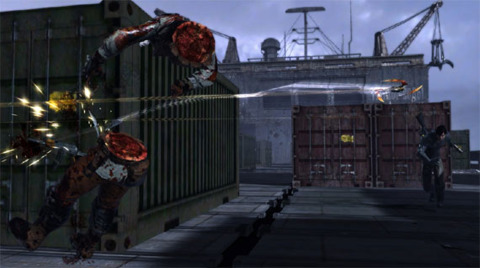
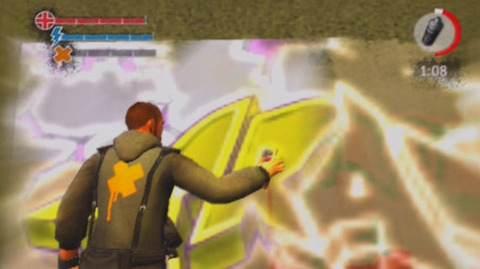
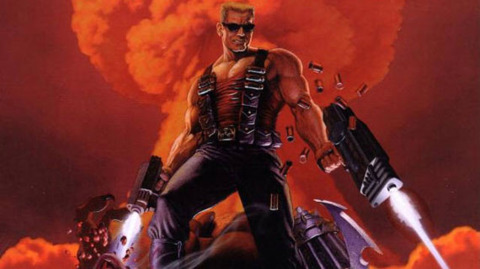
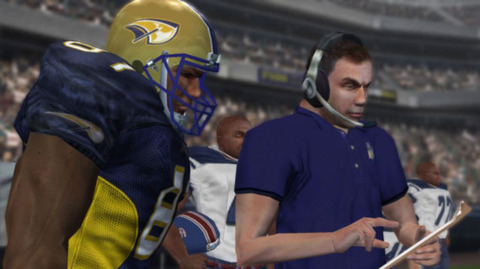

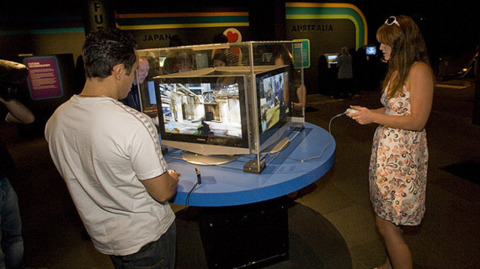
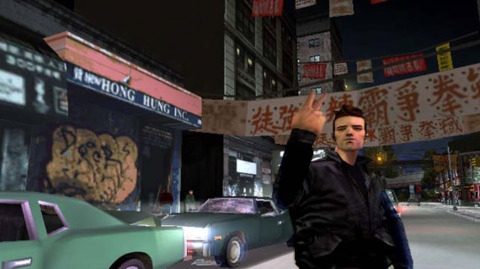
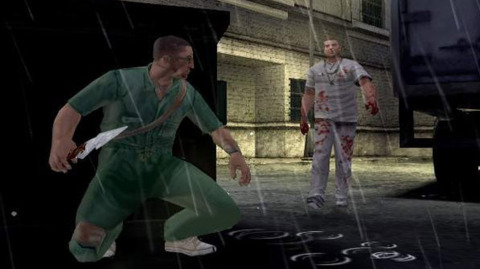

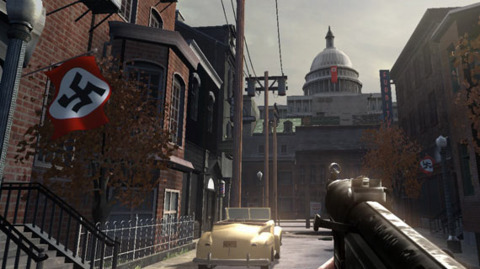

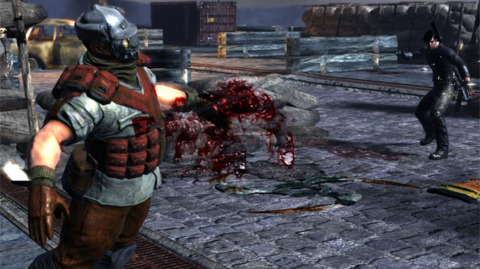

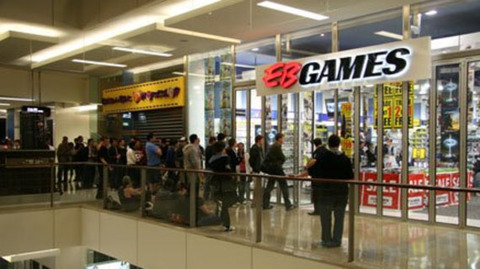
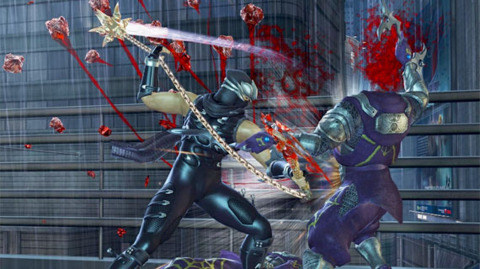

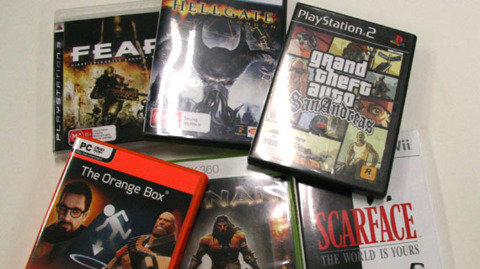
Join the conversation